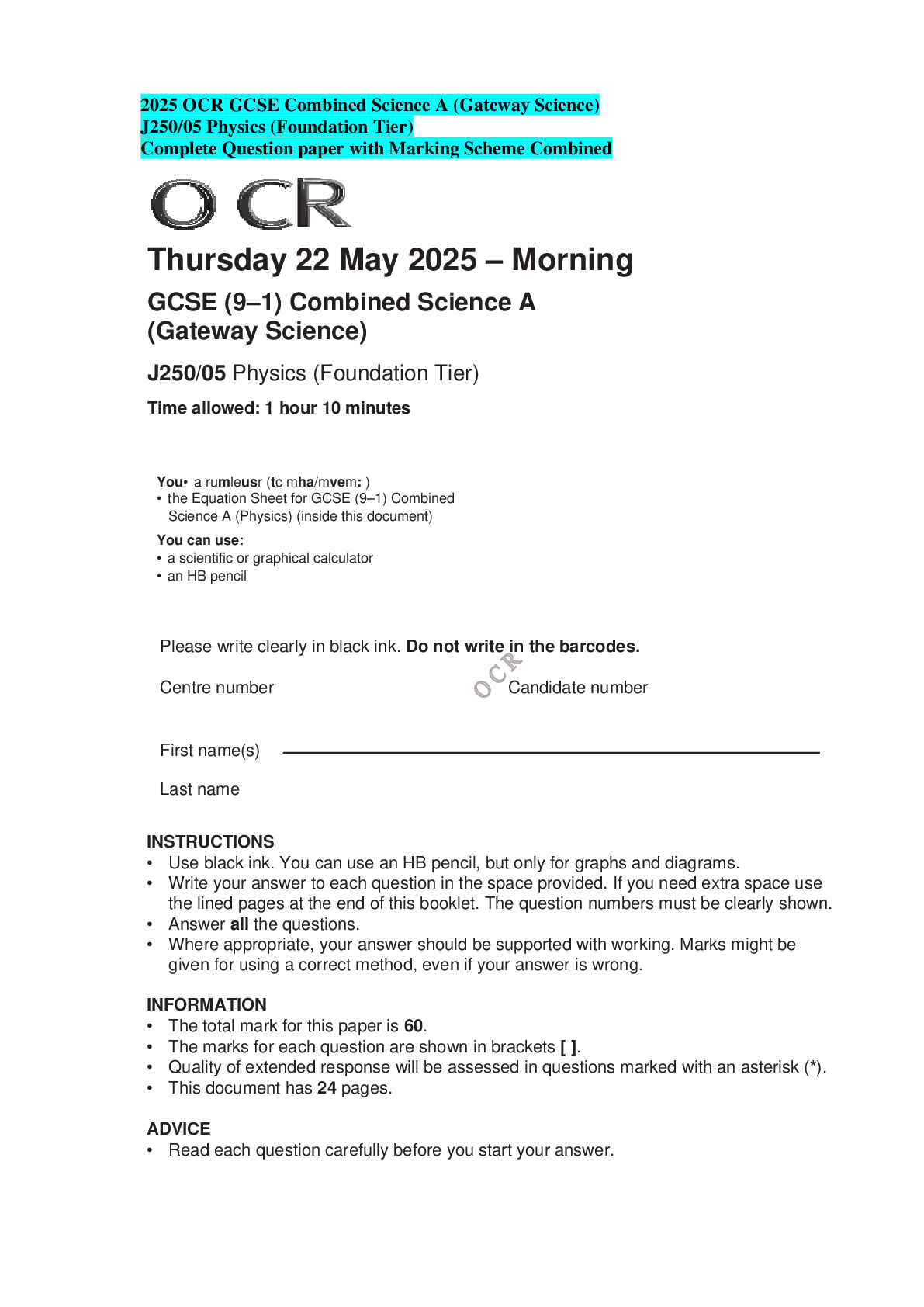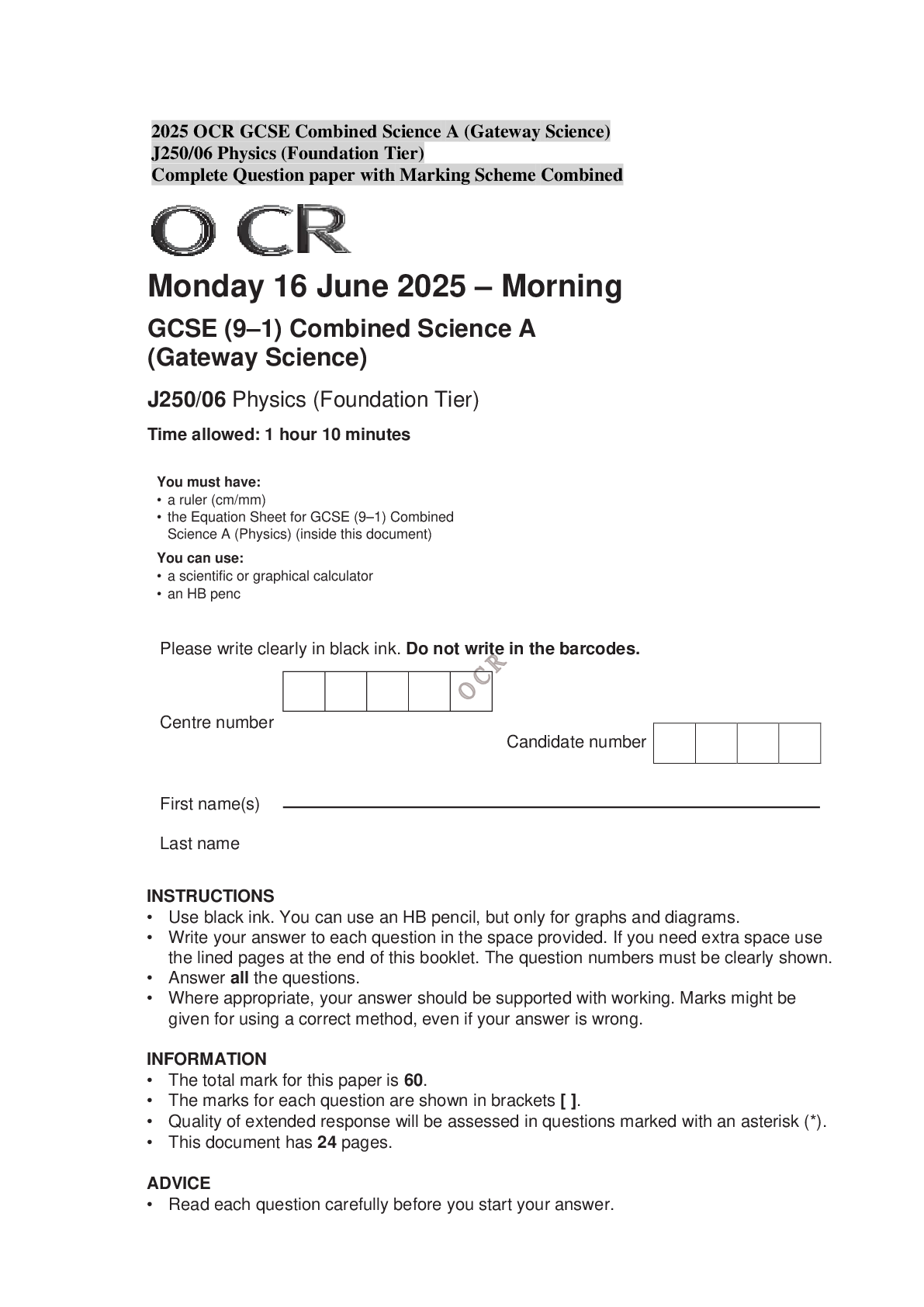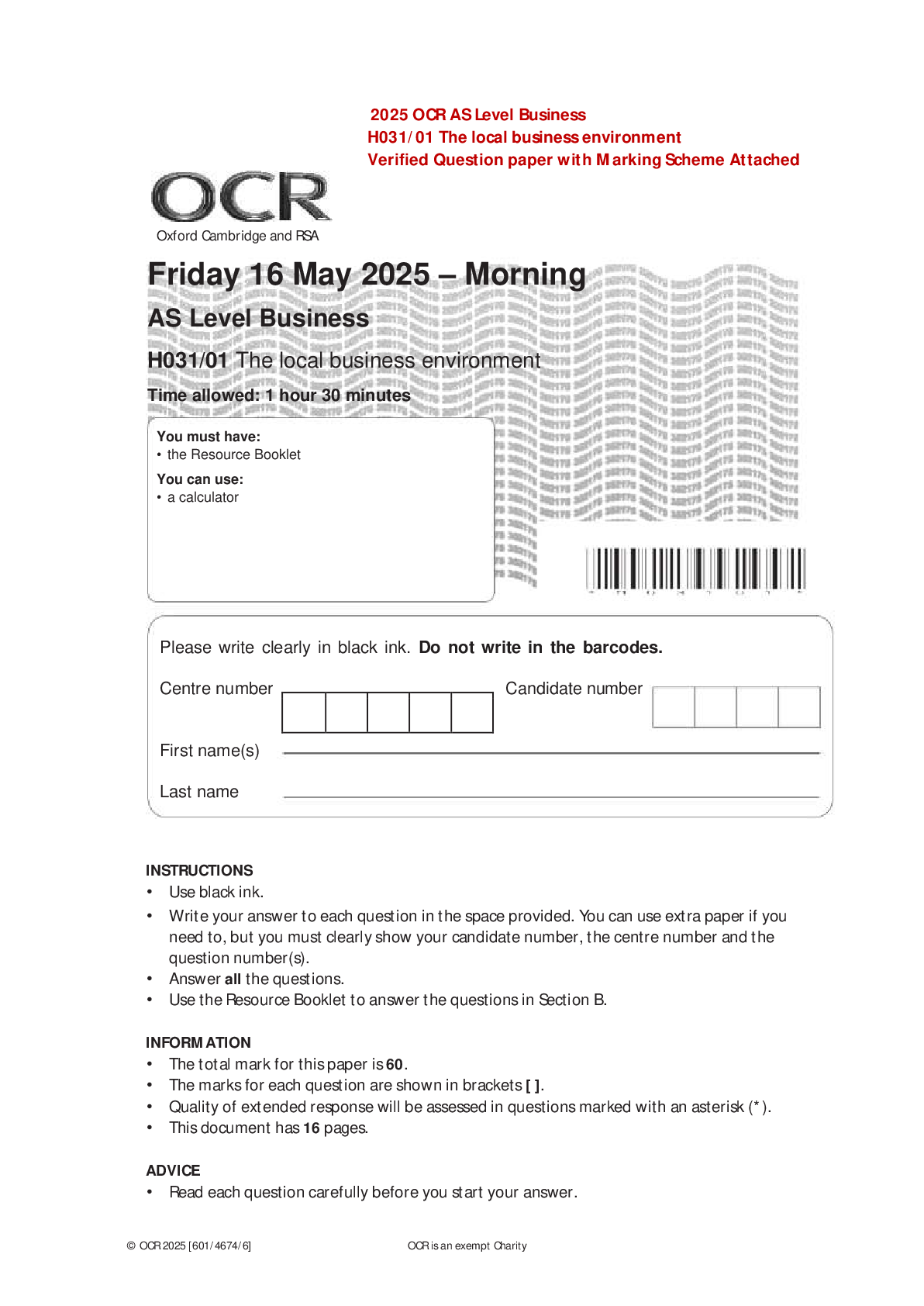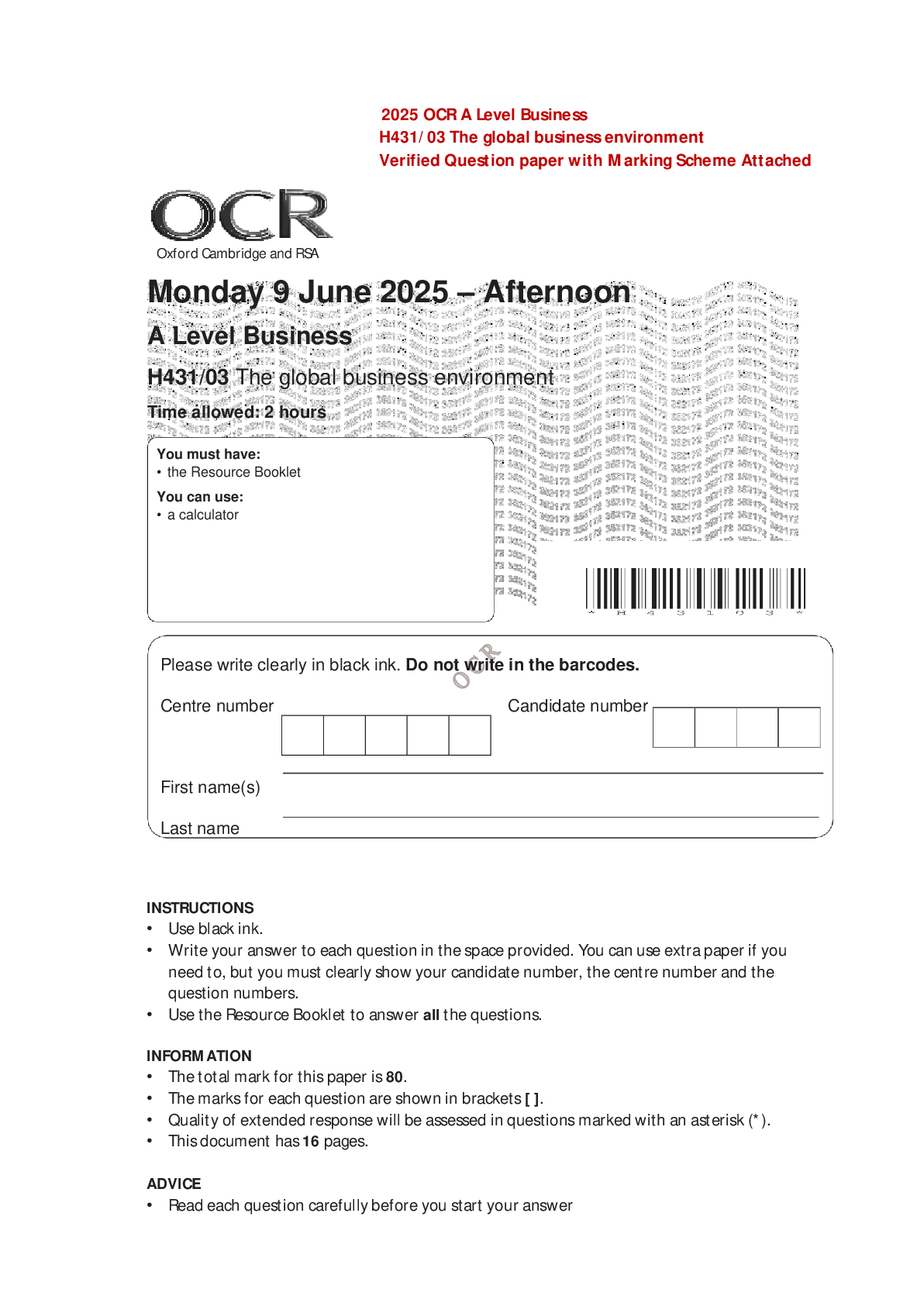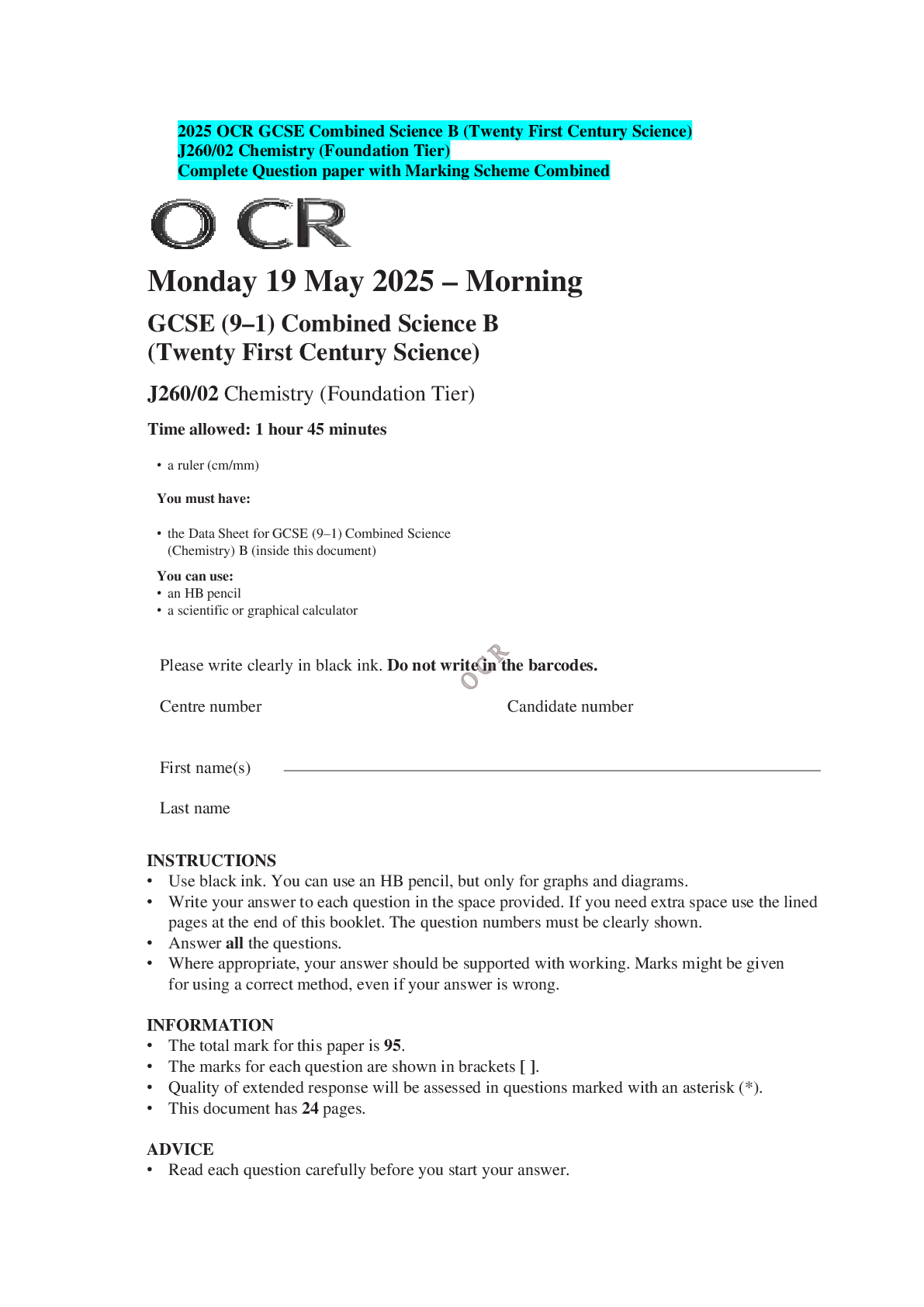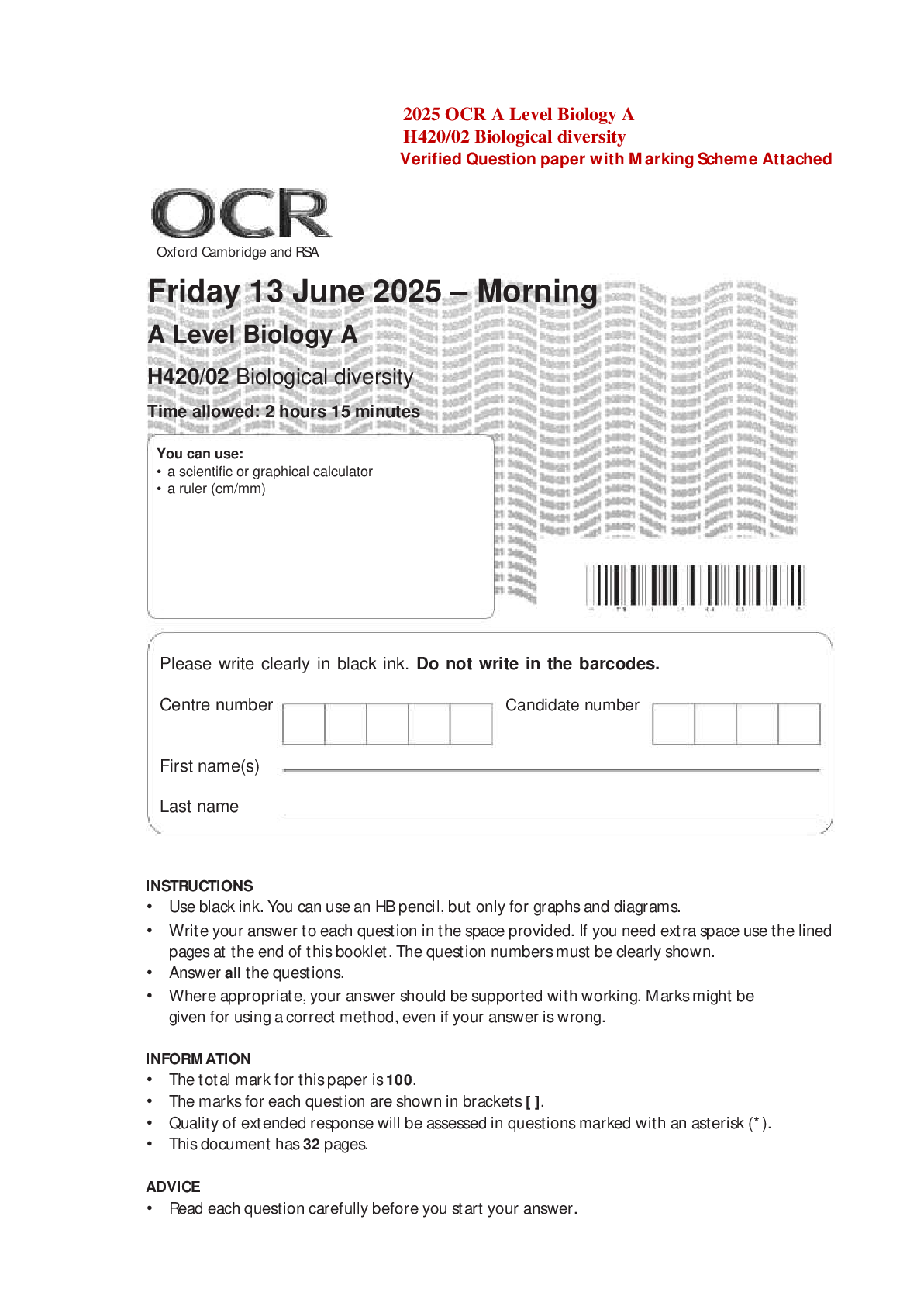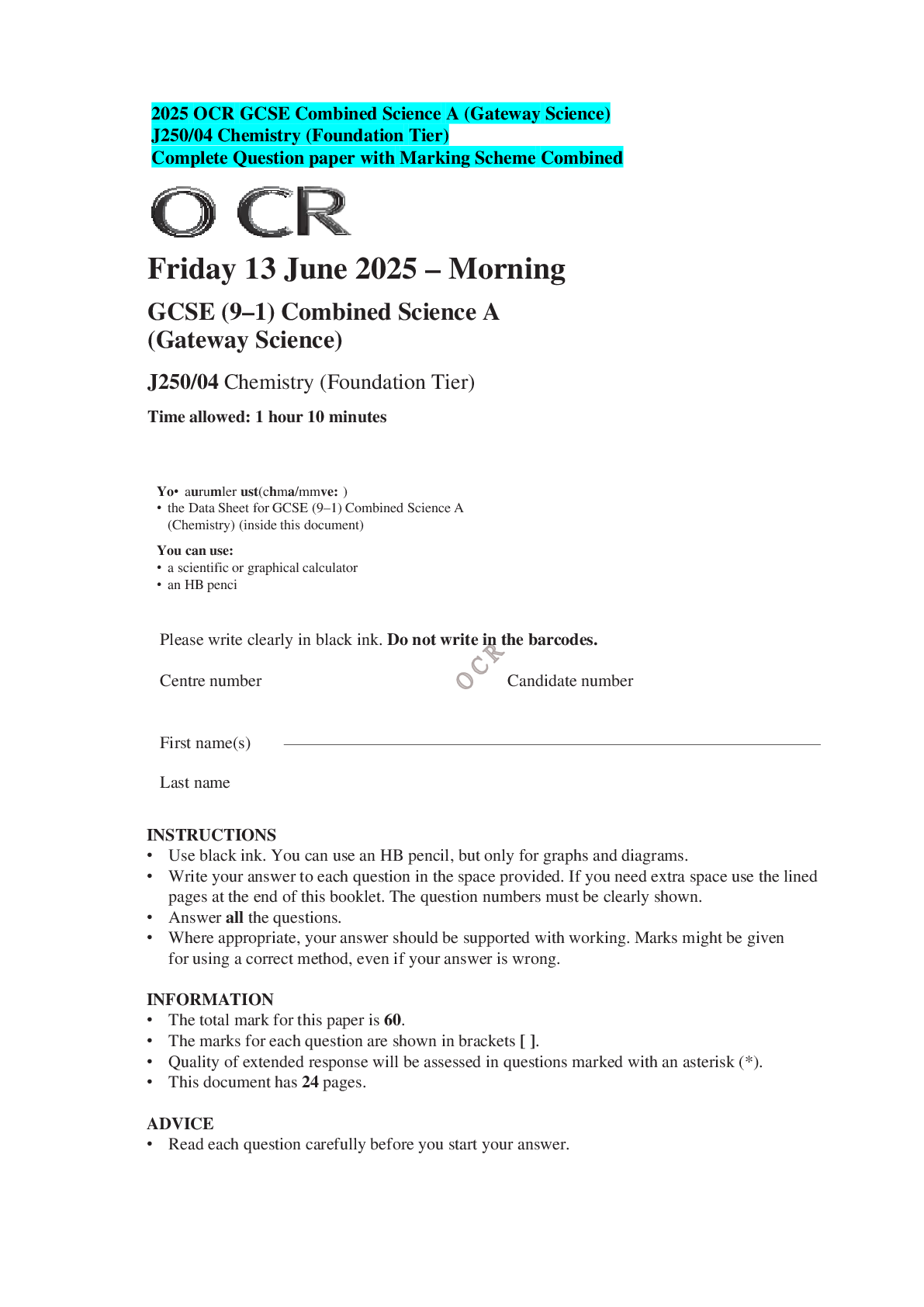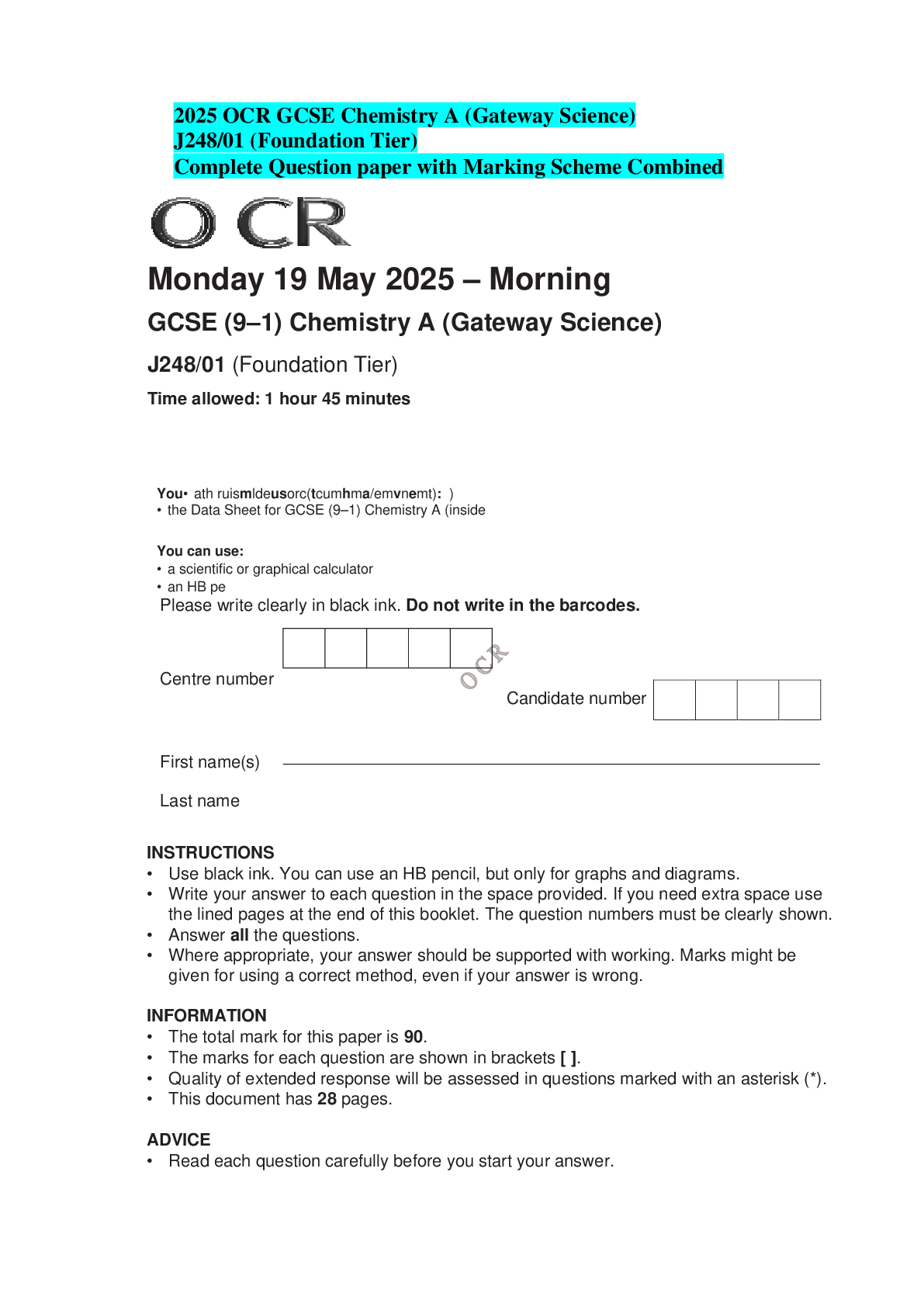nclex.docx (Download to Score All)
Document Content and Description Below
A nurse is witnessing informed consent for a procedure on a toddler. Who may legally this client? What information regarding strategies to decrease the spread of infection should the n the parent ... s of a child with Respiratory Syncytial Virus (RSV)? A nurse is caring for a client diagnosed with leukemia that is undergoing chemotherap nursing interventions related to the following complications of chemotherapy: Constip anorexia, hemorrhagic cystitis, alopecia. A nurse is caring for a child with an autism spectrum disorder. What strategies should the client and his family regarding management of this disorder? A nurse is caring for a client with osteosarcoma requiring a below-the-knee amputation should be made for this client? A nurse is providing dietary education to the parents of a child with celiac disease. Wh should the nurse provide? (Review Nutrition Review Module) A nurse is providing discharge education to the parents of a child with cerebral palsy. What informatio care should the nurse provide? (Review the Fundamental Review Module) A nurse is providing dietary counseling to the mother of a child with acute glomerulone information should the nurse provide? A nurse is caring for a child with cerebral palsy who has been prescribed baclofen (Lior treatment of muscle spasms. What client education should be provided to the caregive A nurse is preparing to administer ear drops to a 2 year old child. How should the clien and how should the nurse position the ear? A nurse is caring for a child with acute glomerulonephritis. What lab results should the anticipate? A nurse is caring for a client with asthma. What should the nurse teach a child with as peak flow readings? A nurse is caring for a child prescribed an MRI (magnetic resonance imaging). What inf be provided to the child's parents regarding this test? An 8 year-old child is brought to the emergency room (ER) with a fractured right femur. The parents report that the child was playing baseball and while sliding into home plate, he collided with another player on the opposing team. The child requires surgery to repair the fracture. After surgery, the child will be in skeletal traction for two weeks and must remain on bedrest. Following skeletal traction, the child will be placed in a long leg cast. Upon assessment, the vital signs are: Temp-37 C (98.6 F), pulse- 98 beats/minute, respirations-21 breaths/minute, and blood pressure- 124/86 mm Hg. The child’s pain level is an “8” on a scale of 0-10. Swelling and bruising of the thigh is noted. An X-ray confirms the diagnosis. The child is frightened about going to the operating room. The child has no known allergies and takes a multivitamin every morning. His passion is sports, especially baseball, and when he grows up in wants to be a professional baseball player and play for the New York Yankees. Questions: • What can the nurse do to reduce the child’s fear of hospitalization? According to Erikson, what psychosocial developmental stage is this child in? Erikson– industry vs. inferiority A sense of industry is achieved through the development of skills and knowledge that allows the child to provide meaningful contributions to society. 3. What diversional activities can the nurse provide while the child is in skeletal traction to promote growth and development? Isometric contractions increase the tension within a muscle but do not produce movement. Repeated isometric contractions make muscles grow larger and stronger 4. Following surgery, what assessment findings would cause the nurse to notify the health care provider (HCP)? If the client appears signs of 1. hypovolemic shock : tachycardia, hypotension, bleeding. 2. Fat embolsm: petechia or rash over chest, conjunctival hemorrhages, snow storm on chest X ray, agitation. 3. Compartment syndrome: pain is not relieve with medication, numbness or paresthesia on the fingers or toes, decrease or diminished to distal pulse, pallor. 5. What is compartment syndrome? What are the findings of compartment syndrome? Compartment syndrome is Compression of nerves, blood vessels, and muscle inside a confined place. ◯ If untreated, tissue necrosis can result. Findings: ■ Increased pain that is unrelieved with elevation or analgesics ■ Intense pain when passively moved ■ Paresthesia or numbness ■ Pulselessness distal to the fracture ■ Inability to move digits ■ Warm digits with skin that is tight and shiny ■ Pallor Assess the extremity at frequent intervals. Notify the provider if compartment syndrome is suspected. Prepare the client for fasciotomy. 6. What nursing actions should be taken when caring for a child in skeletal traction? Skeletal traction uses a continuous pulling force that is applied directly to the skeletal structure and/or specific bone. A pin or rod is inserted through or into the bone. Force is applied through the use of weights attached by rope. Skeletal traction (90°/90° traction) allows the client to change positions without interfering with the pull of the traction and decreases complications associated with immobility and traction. Maintain body alignment. ☐ Provide pharmacological and nonpharmacological interventions for the management of pain and muscle spasms. ☐ Notify the provider if the client experiences severe pain from muscle spasms that is unrelieved with medications and/or repositioning. ☐ Assess and monitor neurovascular status ☐ Routinely monitor the client’s skin integrity and document findings. ☐ Assess pin sites for pain, redness, swelling, drainage, or odor. Provide pin care per facility protocol. ☐ Assess for changes in elimination and maintain usual patterns of elimination. ☐ Ensure that all the hardware is tight and that the bed is in the correct position. ☐ Assess and maintain weights so that they hang freely and the ropes are free of knots. Do not lift or remove weights unless prescribed and supervised by the provider. ☐ Assure that the wrench to release the rods is attached to the vest when using halo traction in the event that CPR is necessary. ☐ Move the client in halo traction as a unit without applying pressure to the rods. This will prevent loosening of the pins and pain. ☐ Consult with the provider for an overbed trapeze to assist the client to move in bed. ☐Provide range of motion and encourage activity of nonimmobilized extremities to maintain mobility and prevent contractures. ☐ Encourage deep breathing and use of the incentive spirometry. ☐ Promote frequent position changing within restrictions of traction. ☐ Remove sheets from the head of the bed to the foot of the bed, and remake the bed in the same manner. 7. What is a primary nursing diagnosis related to the above case study? Risk for Peripheral Neurovascular Dysfunction related to direct vascular injury, tissue trauma, excessive edema, thrombus formation 8. After two weeks of skeletal traction, the child is placed in a long leg cast and is discharged. What discharge teaching should the nurse provide to the child and his parents regarding cast care? No weight bearing until doctor order, avoid crossing legs, bending over, isometric contraction. Isometric contractions increase the tension within a muscle but do not produce movement. Repeated isometric contractions make muscles grow larger and stronger intense pressure at the peak of contractions may indicate the client is completely dilated and is close to delivery. A return to bed and a vaginal examination are needed to confirm this possibility. the fetal head is in the upper right quadrant, the body will be on the right side with theheart tones in the upper quadrant above the umbilicus. etal head and back are pressing against the right side of the client’s abdomen; the fetal heart tones would be heard below the umbilicus on the right side. Answer 3 is incorrect because the fetal heart tones would be heard above the umbilicus in breech presentation Consult the hospital’s ethics committee. If the nurse believes the provider’s actions are directly against the client’s wishes, the nurse should contact the hospital’s ethics committee. These committees are typically multidisciplinary and are organized to consciously and reflectively consider significant and often difficult issues related to client care. Any nurse can consult the hospital’s ethics committee when deemed necessary. A client is seeking treatment for stress related to unexpected loss of employment and is engaging in the stress management technique of cognitive reframing. Which of the following statements would indicate to the nurse that the client understands this stress management technique?“I have excellent job skills; I just need to find a new employer.” Cognitive reframing is a simple and effective technique for reducing stress by looking at things in a more positive light in order to experience them as less stressful. Cognitive reframing for this client would involve building confidence in job skills and searching for a new job. A nurse is caring for a client who has been committed to an acute Mental Health facility with an involuntary emergency commitment order. What should the nurse include when orienting the client to the facility? Select one: a. The client can leave the facility at any time if they sign a medical release form.(wrong they cannot leave because they are danger to themselves or someone else) b. Family will not be able to visit until their provider grants the visitation privileges. c. Length of stay at the facility will be determined by the courts. d. The client has the right to refuse treatment, unless he has been judged to be incompetent. Clients admitted under involuntary commitment are still considered competent and have the right to refuse treatment, unless they have gone through a legal competency hearing and have been judged incompetent. The client who has been judged incompetent has a temporary or permanent guardian, usually a family member if possible, appointed by the court. The guardian can sign informed consent for the client. The guardian is expected to consider what the client would want if they were still competent. The following clients have been assessed in the emergency department. Which of the following clients requires immediate attention? Select one: a. An 81 year-old client with a history of heart failure and new onset pneumonia with a respiratory rate of 32 and a temp of 101 F (38). b. A 19 year-old client who is vomiting and complaining of new onset right lower quadrant pain with rebound tenderness. c. A 48 year-old male complaining of chest pain, cardiac monitor showing sinus tachycardia with occasional PVC's. While all of these clients require nursing care, the 48 year-old male with c/o chest pain and a cardiac rhythm of sinus tachycardia with occasional PVC’s needs immediate attention! Chest pain is an indication of myocardial ischemia and this client has other factors that put him at risk for sudden death: gender, age and PVC’s. PVC’s are not normal in a 48 year old. PVC’s occur when the myocardium is irritated, usually from hypoxia but also from electrolyte imbalance, usually involving K+. This client is young and as a result has not had sufficient time to develop adequate collateral circulation. d. A 6 year-old client with an open tibial fracture that occurred two hours ago after being hit by a car. An epidural is indicated in the active phase of labor. Active labor is defined as: cervical dilation of 4-7 cms, contractions occurring every 3- 5 minutes and lasting 30-60 seconds. Silence gives the client time to think and gain insights, slows the pace of the interaction, and encourages the client to initiate conversation, while conveying the nurse’s support, understanding, and acceptance. A client is admitted to the hospital for suspected infective endocarditis. The client is reporting chills, fatigue, myalgia and dyspnea upon exertion. When assessing the client the nurse notes a heart murmur and a temperature of 102.3 F (38.2 C). Which of the following orders should the nurse implement first? Select one: a. Obtain the blood cultures from three sites Obtaining blood cultures is the priority intervention. Cultures must be drawn prior to initiation of antibiotics so sensitivity results are not influenced. Obtaining specimens from three sites increases the reliability of the results. Clients at risk for endocarditis should be treated with prophylactic antibiotics prior to dental procedures; respiratory and GI diagnostic procedures; GU and Cardiac surgeries. b. Administer IV Penicillin G, 2 million units c. Order the EKG d. Administer Tylenol 325 mg by mouth A nurse has accepted a new position and is attending the general nursing orientation. Which of the following topics will most likely NOT be included in the orientation? Select one: a. Fire safety b. Rules of conduct Orientation activities are more specific for the position, whereas general employee orientation provides the employees with general information about the organization. Rules of conduct are employee indoctrination content and are not part of the nurse’s orientation schedule c. Health promotion d. Accident prevention An elderly client is three days post-operative an anterior and posterior colporrhaphy. Which of the following assessments has the highest priority in this client's care? Select one: a. Apical pulse 90 and slightly irregular. b. Abdomen firm and tender to palpation above the symphysis pubis. An assessment of an abdomen being firm and tender to palpation above the symphysis pubis has the most immediate implications for this post-op client. Urinary retention is possible complication of colporrhaphy and a firm and tender abdomen above the symphysis pubis is an indication of urine retention. The priority intervention for acute urinary retention is catheterization. c. Breath sounds decreased with fine crackles audible at bilateral bases. d. Oral temperature 100.8 F (38.2 C). Collaborate with the health care team and the referring agency to assess client needs. The nurses who receive the referrals need to work collaboratively with the health care team and the referring agency or persons. Continuous coordinated care among all health care providers involved in a client’s care is essential to avoid duplication of effort by the various personnel caring for the client. Understanding client needs is the first step in the referral process. The nurse is preparing to administer digoxin 0.25 mg IVP to a client in severe congestiveheart failure who is receiving D5W/0.9 NaCL at 25 mL/hr. Rank in order ofimportance.1. Administer the medication over 5 minutes.2. Dilute the medication with normal saline.3. Draw up the medication in a tuberculin syringe.4. Check the client’s identification band. 5. Clamp the primary tubing distal to the port. Correct Answer: 3, 2, 4, 5, 1 3. Because this is less than 1 mL, the nurse should draw this medication up in a 1mL tuberculin syringe to ensure accuracy of dosage. 2. The nurse should dilute the medication with normal saline to a 5 to 10mL bolus to help decrease pain during administration and maintain the IV site longer. Administering 0.25 mg of digoxin in 0.5 mL is very difficult,if not impossible, to push over 5 full minutes, which is the manufacturer’s recommended administration rate. If the medication is diluted to a 5 to 10mL bolus, it is easier for the nurse to administer the medication over 5 minutes. 4. The nurse must check two identifiers according to the Joint Commission safety guidelines. 5. The nurse should clamp the tubingbetween the port and the primary IV line so that the medication will enter the vein, not ascend up the IV tubing. 1. Cardiovascular and narcotic medications are administered over 5 minutes. [Show More]
Last updated: 3 years ago
Preview 1 out of 10 pages
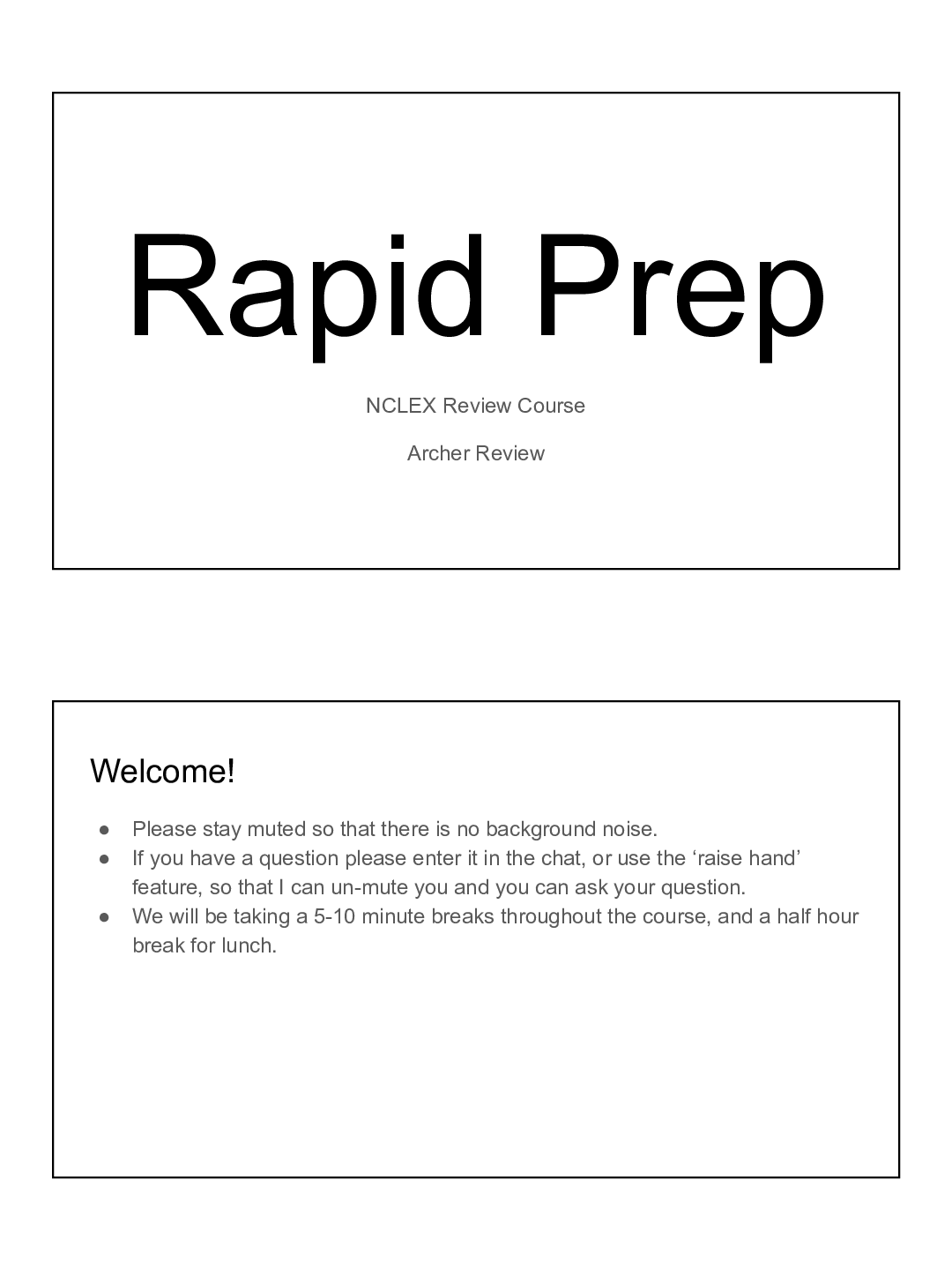
Buy this document to get the full access instantly
Instant Download Access after purchase
Buy NowInstant download
We Accept:

Reviews( 0 )
$10.00
Can't find what you want? Try our AI powered Search
Document information
Connected school, study & course
About the document
Uploaded On
Aug 07, 2021
Number of pages
10
Written in
All
Additional information
This document has been written for:
Uploaded
Aug 07, 2021
Downloads
0
Views
70









.png)
.png)

